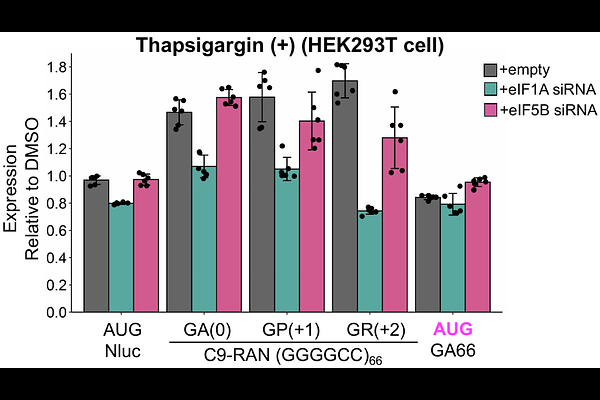Canonical translation factors eIF1A and eIF5B modulate the initiation step of repeat-associated non-AUG translation.

Canonical translation factors eIF1A and eIF5B modulate the initiation step of repeat-associated non-AUG translation.
Ito, H.; Machida, K.; Fujino, Y.; Hasumi, M.; Sakamoto, S.; Nagai, Y.; Imataka, H.; Taguchi, H.
AbstractNucleotide repeat expansions, such as the GGGGCC repeats in C9orf72, associated with C9-ALS, are linked to neurodegenerative diseases. These repeat sequences undergo a non-canonical translation known as repeat-associated non-AUG (RAN) translation. Unlike canonical translation, RAN translation initiates from non-AUG codons and occurs in all reading frames. To identify potential regulators of RAN translation, we employed a bottom-up approach using a human factor-based reconstituted cell-free translation system to recapitulate RAN translation. This approach revealed that omission of either eIF1A or eIF5B enhanced the translation in all reading frames of C9orf72-mediated RAN translation (C9-RAN), suggesting that eIF1A and eIF5B act as repressors of RAN translation. eIF1A and eIF5B are known to contribute to the fidelity of translation initiation. In HEK293T cells, double knockdown of eIF1A and eIF5B further promoted C9-RAN compared to single knockdowns, indicating that these factors regulate C9-RAN through distinct initiation steps. Furthermore, under eIF1A knockdown conditions, the enhancement of RAN translation via the integrated stress response (ISR) was not observed in HEK293T cells, indicating that eIF1A is involved in the ISR-mediated non-AUG translation.